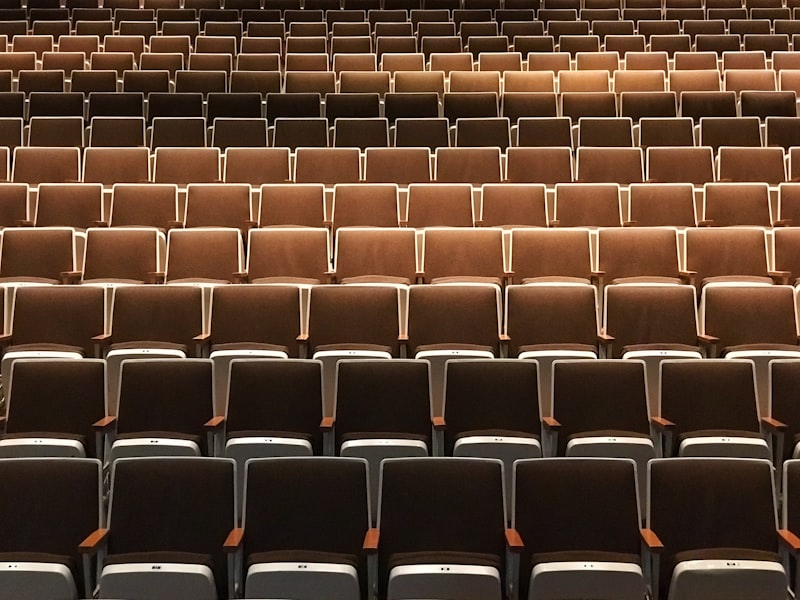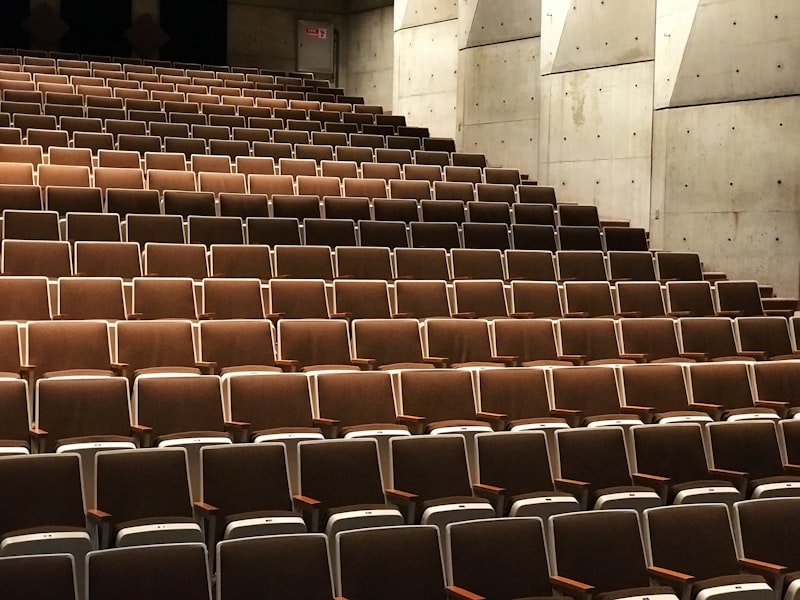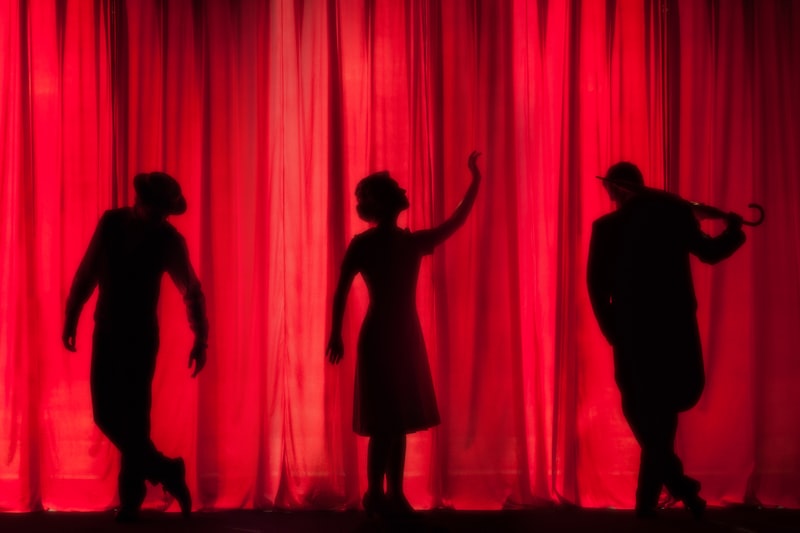Broadway, nestled in the heart of New York City, stands as a beacon of theatrical excellence. Its towering marquees and bustling streets are synonymous with the glitz and glamour of the stage. Here, performances unfold like grand narratives, captivating audiences with every act. The theatre district pulses with life, echoing the dreams and aspirations of performers and playwrights alike.

In contrast, Japan’s theatre traditions are steeped in centuries of history and ritual. Kabuki, with its elaborate costumes and stylized movements, transports audiences to a world where every gesture tells a story. Noh theatre, characterized by its masked performers and haunting melodies, explores themes of life, death, and the supernatural with profound elegance.
Across the globe, India’s theatre culture thrives in a kaleidoscope of colors and emotions. From the vibrant street plays of Delhi to the majestic performances of classical Indian dance-dramas like Bharatanatyam and Kathakali, Indian theatre celebrates diversity and tradition. Each performance is a celebration of storytelling, where mythology and contemporary issues intertwine seamlessly.
In the heart of Europe, the West End in London stands as a testament to theatrical endurance. Its historic theatres have witnessed the evolution of drama, from Shakespearean tragedies to modern musicals. The West End remains a cultural hub, where the magic of theatre continues to captivate audiences from around the world.
Unveiling the Secrets of the World’s Richest Theatre Cultures

One cannot discuss the world’s richest theatre cultures without mentioning the illustrious Broadway in New York City. Renowned for its dazzling array of musicals and plays, Broadway has been a beacon of theatrical excellence for decades. From the grandeur of The Phantom of the Opera to the groundbreaking Hamilton, Broadway continues to set the standard for theatrical brilliance.


Moving across the Atlantic, London’s West End emerges as another powerhouse in the theatre world. With iconic venues like the Royal Opera House and Shakespeare’s Globe Theatre, London offers a rich tapestry of performances ranging from timeless classics to cutting-edge productions. The West End not only preserves its theatrical heritage but also embraces innovation, ensuring a dynamic theatre scene year-round.
Venturing eastward, Tokyo’s Kabuki theatre stands as a testament to Japan’s cultural heritage. Dating back over 400 years, Kabuki captivates audiences with its elaborate costumes, mesmerizing performances, and profound storytelling. Each movement and gesture in Kabuki theatre is meticulously choreographed, reflecting a deep appreciation for tradition and artistry.
In India, the vibrant tradition of Bollywood seamlessly blends theatre with music and dance, creating spectacular productions that resonate with audiences worldwide. Bollywood theatre productions are known for their larger-than-life performances, colorful costumes, and unforgettable musical numbers that celebrate the richness of Indian culture.
From the opulence of Broadway to the elegance of London’s West End, and the cultural tapestries of Tokyo’s Kabuki and India’s Bollywood, the world’s richest theatre cultures offer a glimpse into the diverse and captivating world of performing arts. Each culture brings its unique flair and storytelling prowess to the stage, enchanting audiences and leaving a lasting impact on the global theatre landscape.
Exploring Traditions: Icons of the Richest Theatre Cultures
The world of theatre is a vibrant tapestry woven with the threads of diverse cultures, each contributing unique traditions and iconic figures that enrich the global stage. From the classical splendor of Shakespearean theatre in England to the intricate dance dramas of India’s Bharatanatyam, theatre traditions offer a glimpse into the rich tapestry of human expression.
In England, Shakespeare’s works stand as timeless pillars of theatrical excellence. His plays, such as “Hamlet” and “Romeo and Juliet,” continue to captivate audiences with their profound insights into the human condition. The Globe Theatre in London, a reconstruction of the original Elizabethan playhouse, transports visitors back to the era of doublets and ruffs, where the words of the Bard echo through the open-air amphitheater.
Meanwhile, in Japan, the art of Kabuki theatre mesmerizes with its elaborate costumes, stylized makeup, and dramatic storytelling. Originating in the early 17th century, Kabuki blends dance, music, and acting to create a spectacle that evokes both historical drama and contemporary social commentary. Each movement of the actors is meticulously choreographed, conveying emotions and narratives through gestures and expressions.
Closer to home, the Broadway stage in New York City represents a modern epicenter of theatrical innovation. From the dazzling lights of Times Square to the intimate Off-Broadway venues, Broadway showcases a myriad of genres, from musical extravaganzas like “The Phantom of the Opera” to thought-provoking dramas such as “Death of a Salesman.” Here, actors, directors, and playwrights converge to push the boundaries of storytelling, captivating audiences with performances that resonate long after the curtain falls.

Across continents, theatre cultures continue to evolve, embracing new technologies and narratives while honoring age-old traditions. Whether in the opulent opera houses of Vienna or the experimental theatres of Berlin, each performance is a testament to the enduring power of theatre to provoke, inspire, and entertain.
In this global panorama of theatrical diversity, icons emerge not only from their performances but also from their ability to transcend cultural boundaries, uniting audiences in appreciation of the shared human experience. As we explore these traditions, we discover not only the artistry of the stage but also the stories that define us as individuals and communities, celebrating the richness of our collective heritage.
From Broadway to Beijing: Diving Into Diverse Theatre Cultures
Contrast this with Beijing Opera, a tradition steeped in over 200 years of history and symbolism. Performers adorned in elaborate costumes and intricate makeup execute movements that speak volumes, telling stories of ancient heroes and mythical creatures. Every gesture, from a fluttering fan to a graceful leap, carries profound meaning, rooted in Chinese culture and philosophy.
Broadway thrives on innovation and spectacle, pushing boundaries with cutting-edge technology and show-stopping performances. It’s a world where dreams take center stage, inspiring generations with tales of resilience and triumph. Meanwhile, Beijing Opera preserves the essence of traditional Chinese artistry, where each performance is a tribute to centuries-old traditions and values.
In both Broadway and Beijing, theatre isn’t just entertainment—it’s a reflection of society, a mirror that captures the essence of human experience. Whether in the bustling streets of New York City or the serene courtyards of Beijing, theatre bridges cultures, transcending language barriers to touch hearts and provoke thought. It’s a celebration of diversity, where each production adds a unique brushstroke to the global canvas of performing arts.
As we journey from Broadway to Beijing, we witness how theatre evolves yet remains rooted in its cultural heritage. It’s a testament to the power of storytelling, where every play, musical, or opera carries the legacy of its creators and the spirit of its audience. In this world of lights and shadows, from the glittering marquees of Broadway to the resounding gongs of Beijing’s opera houses, theatre continues to unite, inspire, and captivate audiences worldwide.
Behind the Curtains: Legends and Innovations in Theatre Cultures
Ever wondered what goes on behind those grand curtains of the theatre? It’s not just about the performances you see; there’s a whole world of legends and innovations thriving backstage. Theatre cultures across the globe have their own tales to tell, each as unique as the actors who bring them to life.
In the world of theatre, legends are born from the passion and dedication of those who live and breathe the stage. From Shakespearean dramas in London’s West End to avant-garde productions in New York’s Broadway, every theatre culture has its iconic figures and stories. These legends aren’t just about famous actors or directors; they encompass the spirit of creativity and the pursuit of excellence that defines theatrical artistry.
Innovations in theatre have always pushed boundaries and redefined what’s possible on stage. Think of the groundbreaking set designs of the 20th century or the introduction of immersive technologies in modern productions. Theatre isn’t just about dialogue and acting anymore; it’s about creating entire worlds that transport audiences to new realms of imagination.
What makes theatre cultures truly fascinating is their ability to evolve while preserving traditions. Just as a play evolves through rehearsals, theatre cultures adapt to societal changes and technological advancements. It’s a delicate balance between honoring the classics and embracing the future.
Imagine theatre as a tapestry woven with threads of creativity, each performance adding a new layer of richness and depth. Like a masterful play unfolding scene by scene, theatre cultures continue to captivate and inspire, leaving audiences in awe of the magic that happens behind the curtains.
So next time you attend a theatre production, remember that what you see on stage is only part of the story. Behind those curtains lie the legends and innovations that shape the vibrant world of theatre cultures, where imagination knows no bounds and the spotlight never fades.
Heritage and Innovation: Celebrating the Richest Theatre Cultures
The world of theatre is a tapestry woven with threads of tradition and innovation, where history meets creativity on stage. From the ancient amphitheaters of Greece to the avant-garde performances in modern metropolitan hubs, theatre has evolved into a global phenomenon that celebrates diverse cultures and narratives.
Imagine stepping into Shakespeare’s Globe Theatre in London, where the echoes of Elizabethan drama still resonate through the wooden beams. Here, heritage is palpable in every brick, transporting audiences to a time when theatre was not just entertainment but a reflection of societal values and human emotions. The richness of such heritage lies not only in the architecture but also in the timeless stories that continue to captivate audiences worldwide.
Yet, theatre is not bound by the chains of history alone; it thrives on innovation. Consider the cutting-edge productions of Broadway, where technology and creativity merge to redefine what is possible on stage. From breathtaking visual effects to immersive storytelling techniques, modern theatre pushes boundaries and challenges conventions.
In India, the tradition of theatre spans millennia, from the classical Sanskrit dramas to the vibrant folk performances that celebrate local legends and cultural heritage. Each region of India boasts its own unique style, reflecting the country’s vast diversity and deep-rooted traditions. Today, Indian theatre continues to evolve, blending traditional forms with contemporary themes to resonate with a global audience.
Across the globe, theatre remains a dynamic art form that bridges generations and cultures. It serves as a mirror to society, reflecting its triumphs and tribulations, its heritage and its aspirations. Whether you’re watching a traditional Noh performance in Japan or a groundbreaking musical in New York City, theatre invites you to experience the world through the eyes of its storytellers.
Frequently Asked Questions
How has globalisation impacted the preservation of rich theatre traditions worldwide?
Globalization has influenced the preservation of rich theatre traditions worldwide by facilitating broader dissemination through international collaborations, digital archives, and cultural exchanges. While traditional forms evolve, globalization provides platforms for their global recognition and adaptation.
Which countries boast the most historically significant theatre traditions?
Discover the countries with the richest historical theatre traditions, showcasing centuries of dramatic artistry and cultural heritage.
What are some examples of iconic plays and playwrights from the wealthiest theatre cultures?
Discover iconic plays and playwrights from the world’s wealthiest theatre cultures in this concise FAQ. Explore timeless works such as William Shakespeare’s classics from England, Anton Chekhov’s introspective dramas from Russia, and Henrik Ibsen’s groundbreaking social critiques from Norway.
How does theatre vary across cultures known for their rich theatrical heritage?
Explore how theatre practices differ among cultures celebrated for their rich theatrical heritage, highlighting unique performance styles, narrative traditions, and influences of local customs and beliefs.
What are the characteristics of the world’s richest theatre cultures?
Explore the defining traits of the world’s richest theatre cultures, highlighting their diverse storytelling traditions, prolific production outputs, influential playwrights, and enduring impact on global performing arts.


